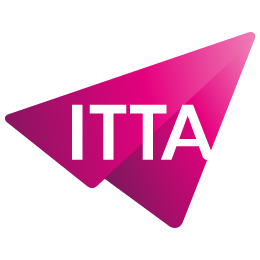Home > Trainings > Management > Process and Lean Management > Black Belt Lean Six Sigma
The Lean Six Sigma Black Belt training guides you toward advanced expertise in continuous improvement. It builds on the knowledge gained at the Green Belt and Yellow Belt levels to deepen the DMAIC methodology. You will learn how to clearly define a project, measure its performance, analyze data, identify key levers for action, and implement sustainable solutions. Practical workshops, focused on real-world cases, help you master statistical and methodological tools. This pragmatic approach prepares you to lead strategic, high-impact projects and to develop a comprehensive vision of processes.
The Black Belt program also prepares you for the IASSC Certified Lean Six Sigma Black Belt exam. It provides complete support to ensure success in this internationally recognized certification. You will strengthen not only your technical expertise but also your managerial skills, enabling you to guide teams and monitor projects effectively. This dual focus enhances your credibility and broadens your career opportunities. You will learn to engage stakeholders, solve complex problems, and maintain results over time. Thanks to a balance of theory and practice, you become a key driver of performance and organizational transformation.
Have followed the course or have the knowledge cover by: Green Belt Lean Six Sigma
Module 1: Define phase
Module 2: Measure phase
Module 3: Analyze phase
Module 4: Improve phase
Module 5: Control phase
This course offers:
This course prepares to the exam IASSC Certified Lean Six Sigma Black Belt.
The Black Belt plays a central role in Lean Six Sigma projects. This professional is not only a technician of statistics or processes. They act as a true leader of continuous improvement. Their role is to define strategic directions, unite teams, and ensure that the results achieved are sustainable. In organizations, they become a reference point and support for production managers, quality teams, or managers involved in cross-functional projects.
The DMAIC approach forms the backbone of Lean Six Sigma. For the Black Belt, each phase is an opportunity to turn data into decisions. Define aligns projects with customer expectations and organizational strategy. Measure ensures the reliability of collected data. Analyze identifies root causes of problems and uncovers inefficiencies. Improve translates into concrete and often innovative solutions. Finally, Control guarantees long-term stability of results. This methodological sequence prevents temporary fixes and supports continuous improvement.
Statistical tools are a key element in the Black Belt journey. Unlike the Green Belt and Yellow Belt levels, the Black Belt must work with more advanced methods. They learn to use regression, multivariate analyses, and design of experiments. These tools help validate hypotheses and base decisions on measurable facts. This scientific approach minimizes guesswork and strengthens the credibility of improvement projects.
Beyond techniques, the Black Belt is also a manager and facilitator. Their role is to persuade and involve employees in change. They know how to adapt their communication to different stakeholders and set up collaborative workshops. Communication and change management are essential skills. A technical solution only has value if teams adopt it. Therefore, the Black Belt must combine analytical rigor with relational intelligence.
The Black Belt certification is not limited to a single sector. It is applied in industry, services, healthcare, IT, and logistics. Wherever there are processes, there is room for improvement. In a factory, the Black Belt may reduce production defects. In a customer service department, they can improve response times. In a hospital, they may help streamline patient pathways. This versatility explains why Black Belt training is increasingly in demand.
Earning a Black Belt certification is a major asset for career advancement. Companies seek professionals capable of managing complex projects and delivering measurable gains. The certification is internationally recognized, supporting mobility and opening diverse opportunities. It also highlights managerial skills and strengthens the ability to influence strategic decisions.
Completing a Black Belt training program allows participants to progress in a structured and gradual way. Learners benefit from both theoretical and practical support. Workshops and case studies ensure direct application of concepts. This structured learning approach helps participants gain efficiency and apply tools in real situations immediately after training. In addition, preparing for the IASSC exam provides quality assurance and official recognition of the skills acquired.
What is the difference between a Green Belt and a Black Belt certification?
The Green Belt prepares professionals to manage medium-scale improvement projects. The Black Belt, however, equips them to lead strategic projects, manage teams, and use more advanced statistical tools.
In which industries is a Black Belt certification useful?
It applies across all fields where process optimization is a priority. Industry, services, healthcare, IT, and logistics all benefit from certified Black Belt professionals.
Is the Black Belt training only for statisticians?
No, it is also designed for managers, engineers, or project leaders. While basic statistical knowledge is useful, the focus is on structuring and leading improvement projects.
How long does it take to prepare for and achieve a Black Belt certification?
The duration depends on the chosen format and the participant’s pace. On average, a complete program takes several weeks, combining theory, practical workshops, and exam preparation.
What benefits does a company gain from a certified Black Belt employee?
The organization gains in-house expertise capable of reducing costs, improving quality, and boosting customer satisfaction. Projects led by Black Belts deliver tangible and measurable results.

Nous utilisons des cookies afin de vous garantir une expérience de navigation fluide, agréable et entièrement sécurisée sur notre site. Ces cookies nous permettent d’analyser et d’améliorer nos services en continu, afin de mieux répondre à vos attentes.
Monday to Friday
8:30 AM to 6:00 PM
Tel. 058 307 73 00
ITTA
Route des jeunes 35
1227 Carouge, Suisse
Monday to Friday, from 8:30 am to 06:00 pm.